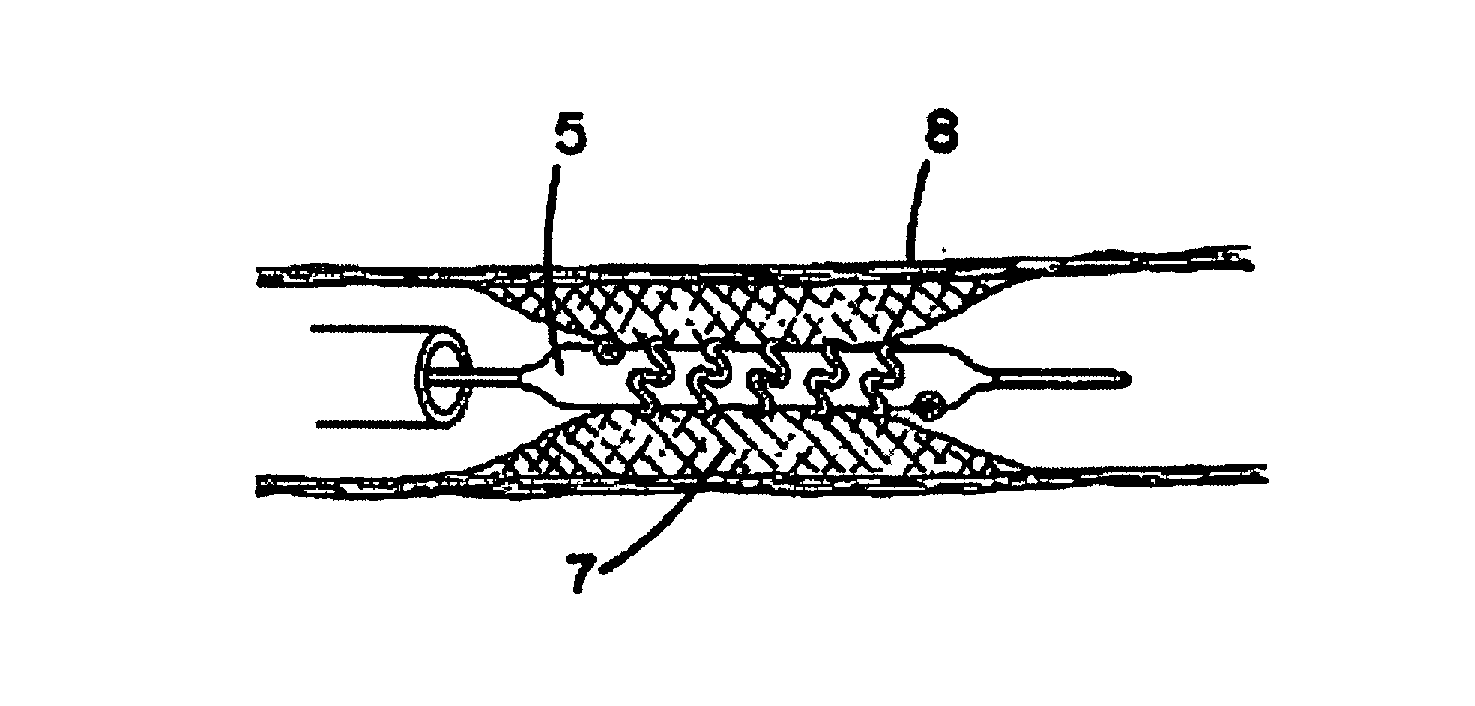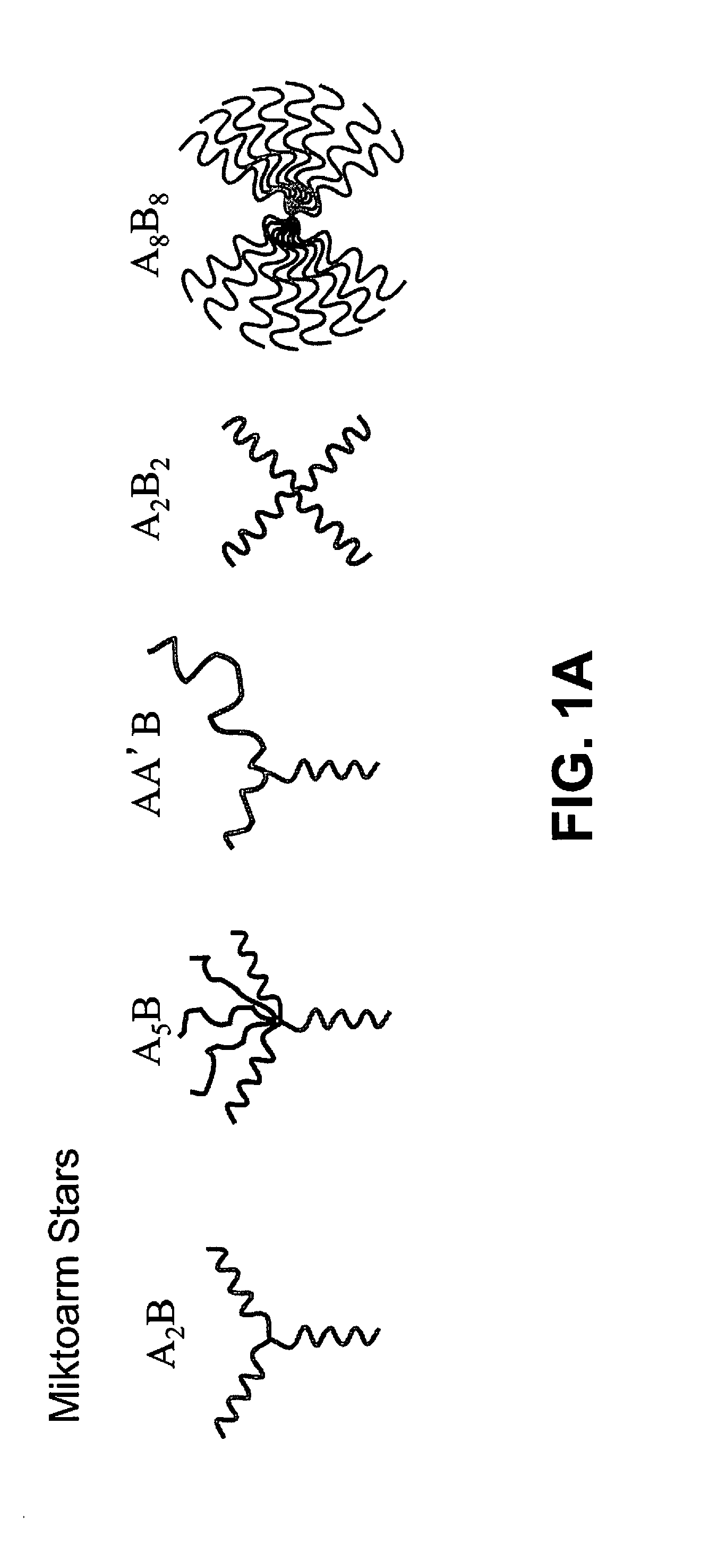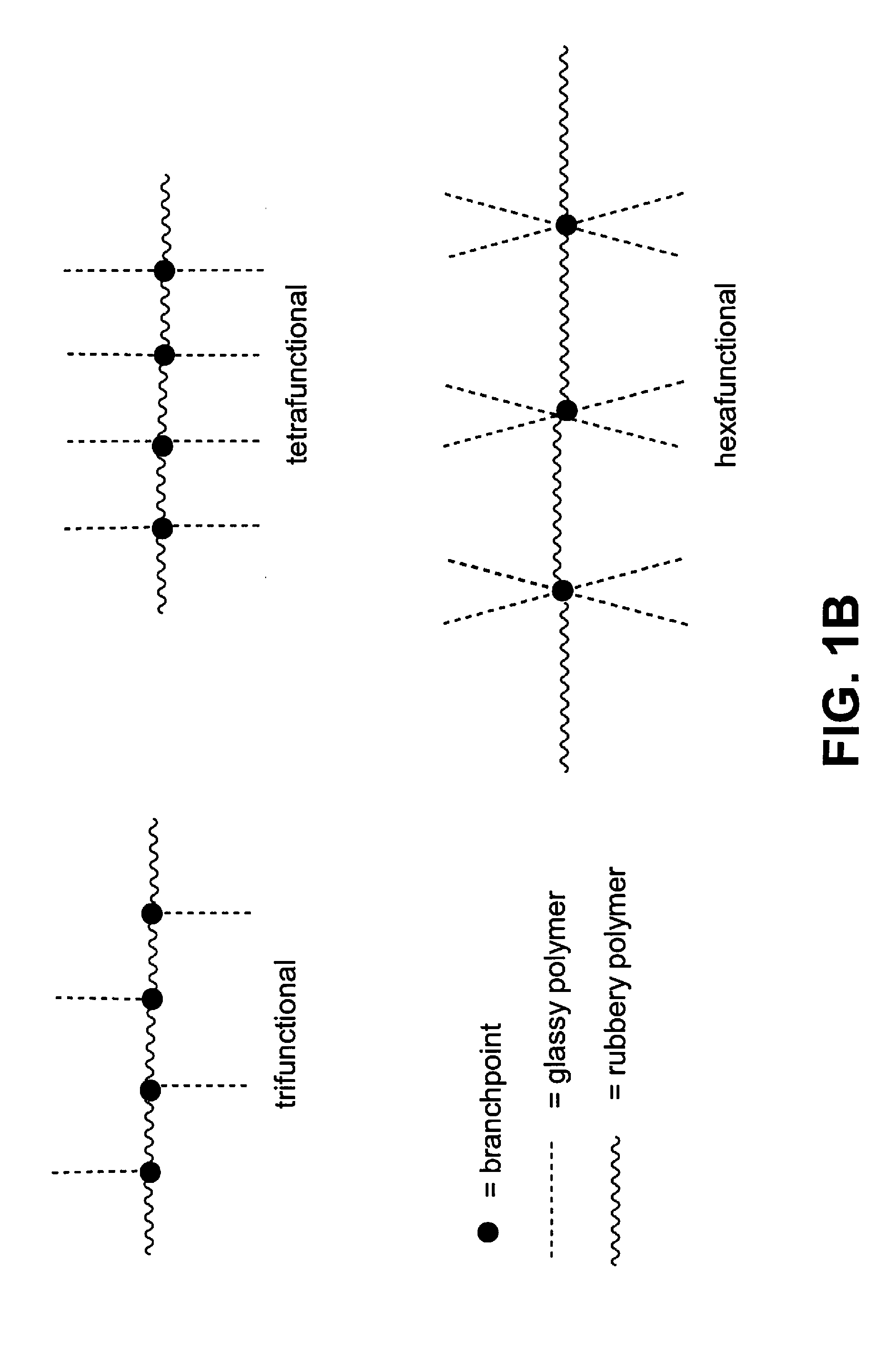Multigraft Copolymers as Superelastomers
a technology of copolymer and multi-graft, applied in the direction of antifouling/underwater paint, water-setting substance layered product, synthetic resin layered product, etc., can solve the problem of challenging synthesis of regular spaced copolymer
- Summary
- Abstract
- Description
- Claims
- Application Information
AI Technical Summary
Benefits of technology
Problems solved by technology
Method used
Image
Examples
example 1
Synthesis of Random Multigraft Copolymers
[0156]The synthesis of random multigraft copolymers comprising, for example, PS side chains and a PI backbone, can be based on the use of macromonomers bearing one or more PS side chains, prepared by anionic polymerization or other polymerization methods, followed by the living anionic copolymerization of the macromonomer with isoprene to create the graft copolymer. See, e.g., Driva et al., J. Polym. Sci.: Polym. Chem., 43, 4470-4078 (2005); and Rahman et al., Macromolecules, 41, 8225-8230 (2008). In contrast to previous studies, where branch point spacing was carefully controlled (see Uhrig and Mays, Macromolecules, 35, 7182-7190 (2002)), the random placement of the grafts can be achieved by the use of a potassium alkoxide as an additive during the anionic copolymerization of the styrene-based macromonomer and the isoprene. See Driva et al., J. Polym. Sci.: Polym. Chem., 43, 4470-4078 (2005). Polymers can be prepared having 15 weight % PS si...
example 2
General Methods for Morphological Characterization
[0157]The following procedure is a representative method by which the morphology of a block or graft copolymer is evaluated. This procedure is the same general approach that has been employed in previous block copolymer research on PS-polydiene materials to produce a sample representative of the equilibrium morphology, and to evaluate that morphology. See Gido, S. P., et al., Macromolecules, 29, 7022 (1996); Gido, S. P., et al., Macromolecules, 30, 6771 (1997); Pochan, D. J., et al., Macromolecules, 29, 5091 (1996); Pochan, D. J., et al., J. Polymer Sci.: Part B, Polymer Physics, 35, 2629 (1997); Lee, C., et al., J. Chem. Phys., 107, 6460 (1997); Lee, C., et al., Macromolecules, 30, 3732 (1997); Lee, C., et al., Polymer, 19, 4631 (1998); Xenidou, M., et al., Macromolecules, 31, 7659 (1998); Beyer, F. L., et al., Macromolecules, 30, 2373 (1997); Bever, F. L., et al., Macromolecules, 32, 6604 (1999); Beyer, F. L., et al., J. Polymer Sc...
example 3
Synthesis and Molecular Characterization of Random Multigraft Copolymers
[0161]The synthesis of the multigraft copolymers having double polystyrene side chains or grafts randomly placed on a polyisoprene backbone (random tetrafunctional multigrafts) followed generally the published procedure of Driva et al. (P. Driva, H. Iatrou, D. J. Lohse, and N. Hadjichristidis, J. Polym. Sci., Part A, Polym. Chem., 43, 4070 (2005)). These workers reported the synthesis of comb branched polybutadienes having both a polybutadiene backbone and double polybutadiene grafts. However, in the present example the double tailed macromonomers were based on polystyrene side chains and the backbone was polyisoprene.
[0162]The purification and synthesis of reagents were carried out using vacuum line conditions as described by Uhrig and Mays (D. Uhrig and J. Mays, J. Polym. Sci., Part A, Polym. Chem., 43, 6179 (2005)). 4-(Dichloromethylsilyl)styrene (DCMSS) was prepared using the Grignard reaction of 4-chlorosty...
PUM
| Property | Measurement | Unit |
|---|---|---|
| volume fraction | aaaaa | aaaaa |
| volume fraction | aaaaa | aaaaa |
| volume fraction | aaaaa | aaaaa |
Abstract
Description
Claims
Application Information
 Login to View More
Login to View More - R&D
- Intellectual Property
- Life Sciences
- Materials
- Tech Scout
- Unparalleled Data Quality
- Higher Quality Content
- 60% Fewer Hallucinations
Browse by: Latest US Patents, China's latest patents, Technical Efficacy Thesaurus, Application Domain, Technology Topic, Popular Technical Reports.
© 2025 PatSnap. All rights reserved.Legal|Privacy policy|Modern Slavery Act Transparency Statement|Sitemap|About US| Contact US: help@patsnap.com



